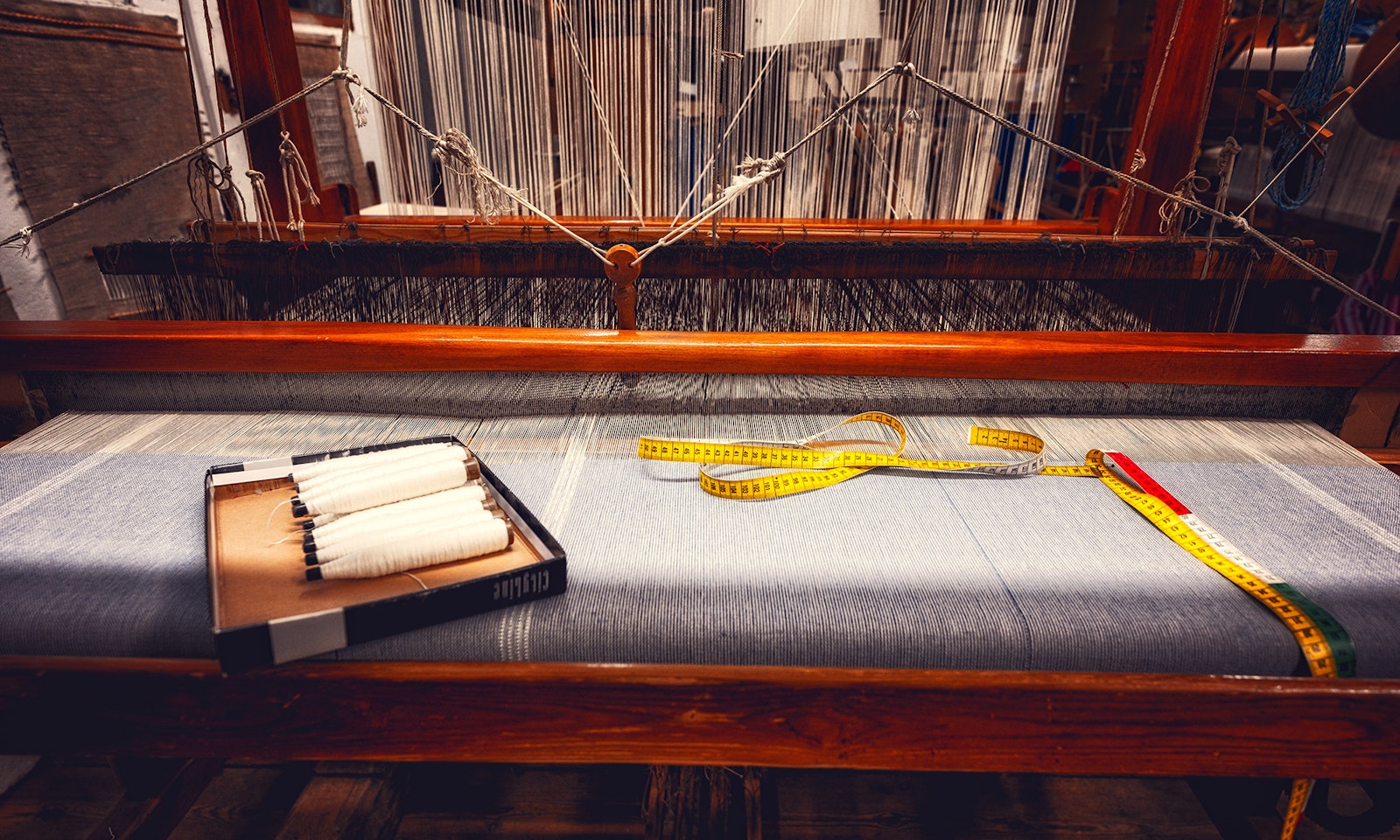One of the hazards of looking for something in the Handwoven archives is that I often find myself distracted by interesting things that have nothing to do with my search. The other day I came upon this essay by Linda Ligon in the November/December 1992 issue. Linda was the founder of Handwoven, she is one of the partners of Long Thread Media, and she also happens to be one of my favorite authors. The essay is funny and it has stood the test of time. I leave it here for you in honor of April Fool's Day. Enjoy! ~ Susan
I AM THE right-brain mother of a left-brain family. I'm not sure how it happened, but it's probably related to the fact that all the kids look like their father, too. Thomas is a physicist-engineer-computer programmer, my elder son an economist, my daughter a mathematician. It's early to say about our younger son, but he did start keeping a ladybug census of our back yard at the age of four. These people jump up from the dinner table every few minutes to consult the encyclopedia, they have passionate rows about theorems, they place bets with elaborate odds on almost every statement that is uttered in our household.
Me, I rarely cook with a recipe, seldom end up taking off my loom exactly what I thought I was putting on it, and have at least as much faith in what I dream at night as in what I read in the newspaper. So it was with some surprise that I recently found myself formulating a law, an immutable Law of Weaving. I call it Ligon's Law. It is as follows:
"The odds that a sleying error will appear in the middle of a warp are directly proportional to the width and sett of the warp."* (see below)
In other words, if your warp is 40 inches wide and 20 ends per inch, you can be pretty certain that you will find a sleying error exactly in the middle of it. This error will have maximum visibility if you don't fix it and involve maximum time and bother if you do. If, on the other hand, your warp is only 6 inches wide and 8 ends per inch, the sleying error will probably be right next to the edge where you can fix it in a jiffy. A precondition of this law, of course, is the law that "Any given warp will have at least one error."
Always, always having an error in the middle of my big wide warps used to make me feel like a crummy weaver. Discovering the above laws, and thus knowing that my mistakes are as inevitable as gravity, has been a comfort. So, I've been taking a new look at some of those old laws from high school physics and chemistry to see if they might have similar application. Interestingly, they do.
Take, for instance, Newton's Second Law, "An object at rest will remain at rest unless an outside force acts upon it." This is why I sit on the couch working crossword puzzles every evening after dinner instead of weaving, which would be more fun and more productive. For me, "outside force"= "deadline", and I have one of those only every few weeks. (Or as Eudora Welty once wrote, "She would of been a good woman if someone had stood with a gun to her head every day of her life.")
 A marble statue of Sir Isaac Newton, natural philosopher, mathematician, and scientist in Trinity College anti-chapel at Cambridge University. Photo by K. Mitch Hodge on Unsplash
A marble statue of Sir Isaac Newton, natural philosopher, mathematician, and scientist in Trinity College anti-chapel at Cambridge University. Photo by K. Mitch Hodge on Unsplash
Newton's Third Law is more subtle than his Second, but also more profound: "Every action has an equal and opposite reaction." In other words, everything you try to do will go wrong. I think Mr. Peters has claimed this law for his own, but Newton was there first. This is a depressing law, and when it comes to mind, I try to cancel its negative karma by thinking also of Archimedes' Principle, or at least the cheerful part of it where he leaps out of the tub shouting "Voila!". Or "Viola!", as we once spelled it in big letters in a book we published, which is proof in itself of Newton's Third Law. [ed. note: How did Archimedes learn French?]
Einstein's Theory of Relativity is way beyond me, but I get an inkling from his famous E = mc², or Energy = mass x speed of light², as to why I often don't have much of the E part of it, and why going on a diet won't help. This also relates to sitting on the couch every night, proving how intertwined the laws of nature are.
Then there's Avogadro's Number, 6.023 x 10²³, a number of great utility (which is maybe why scientists use it to talk about gas). Think of all the questions for which it can approximate an answer: "How many cones of yarn do you own that you plan to surely use someday?" "How many great ideas for projects have you not gotten around to yet?" Think how much smarter you would sound if you said "Avogadro's Number," instead of "Oh, lots and lots," or "About five billion jillion," or "Gobs."
Finally, one of the most intriguing concepts to come out of modern physics is Heisenberg's Uncertainty Principle, which states, "We can know either where a sub-atomic particle is at a certain moment, or where it is going, but we cannot know both." Mr. Heisenberg is too modest. Change either to neither, and his Principle applies not only to sub-atomic particles, which nobody can see anyway, but also to teenage sons, sewing scissors, rolls of scotch tape, money, magazine articles that one intended to save, reading glasses, and almost the entire contents of one's weaving room.
Those of us who lean more toward the artistic and intuitive would do well to try to understand and use the gifts that science makes available to us. Our lives would be richer and more insightful, our intellects better balanced. I just know they would.
*There is a corollary to this: "The odds that a weaver will get up to take a break exactly in the middle of a warp are also directly proportional to the width and sett of the warp." Go figure.

